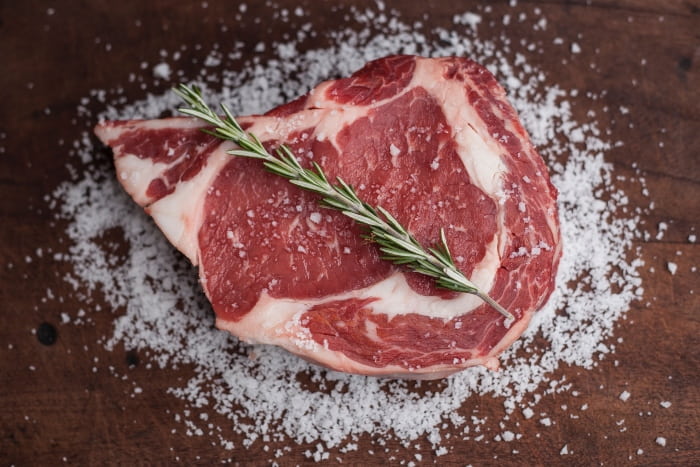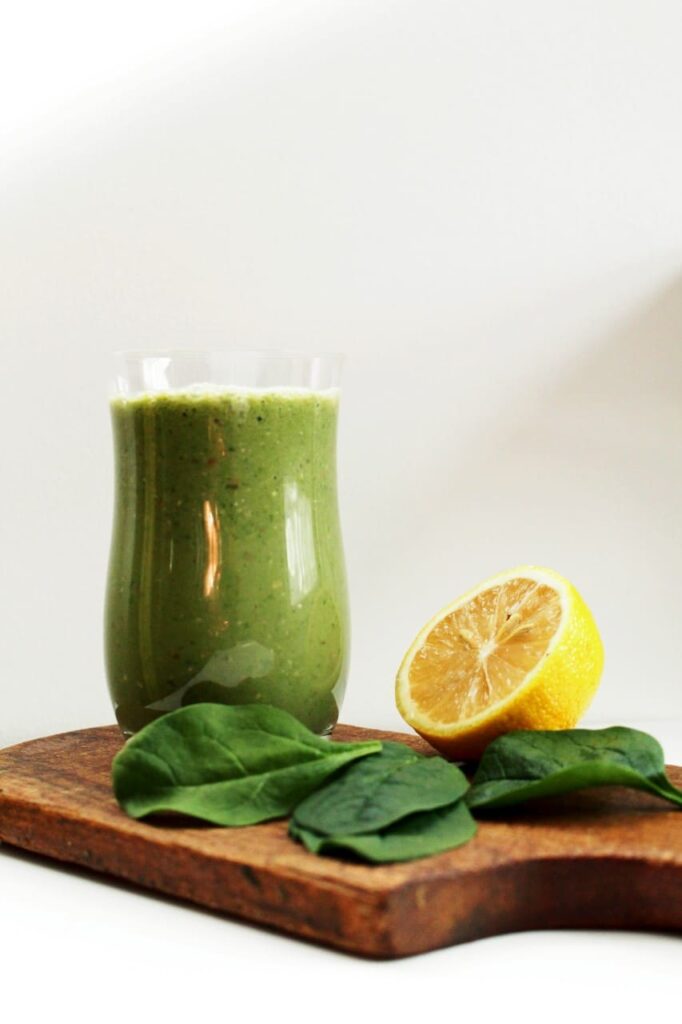Are you getting enough iron?
Iron deficiency is surprisingly common, especially among women, and can negatively impact your quality of life on a daily basis without you even knowing.
The good news is, iron deficiency is a relatively easy fix.
This article covers everything you need to know about iron, including the best sources of iron to ensure you avoid this common deficiency, plus my favourite iron-rich smoothie recipe!
What Does Iron Do and Why is it Important?
The main function of iron is to carry oxygen throughout your body.
Iron is needed to make a molecule called hemoglobin. Hemoglobin is a protein in red blood cells that carries oxygen from your lungs to all your body tissues via the bloodstream.
Without adequate iron, your body cannot make enough hemoglobin, and your red blood cells will not be able to transport adequate oxygen that your body needs to function properly.
Iron is also an important cofactor in many cellular reactions in the body, and is needed for the body to make several hormones.
How to Tell if You Are Iron Deficient
Iron is an essential mineral, meaning your body cannot produce it on its own, and it must be acquired through diet.
When your body is not getting enough iron from your diet and has used up its iron stores, iron deficiency anemia sets in.
Symptoms of anemia include: (1)
- low energy, fatigue
- weakness
- exhaustion
- shortness of breath at minor activities
- light-headedness, dizziness
- headaches
- difficulty concentrating
- susceptibility to infections
- poor circulation, cold hands and feet
- brittle nails
- pale or yellowish skin
Since these symptoms can be caused by a variety of things, not just iron deficiency, they often go unnoticed and undiagnosed.
To diagnose anemia, a blood test is needed.
Populations most at risk for iron deficiency include: (1)
- individuals following plant-based diets such as vegetarian or vegan diets
- individuals with gut disorders such as Crohn’s or celiac
- premenopausal women
- pregnant women
- individuals with chronic health conditions such as diabetes
- individuals over 65
How Much Iron do You Need?
The recommended dietary allowance (RDA) for iron is 8 mg/day for men, 18 mg/day for women under 50, 8 mg/day for women over 50, 27 mg/day for pregnant women, and 9 mg/day for breastfeeding women (2).
Individuals following a plant-based diet are recommended to consume almost twice these daily iron intakes, because the iron that comes from animal sources (heme iron) is absorbed by the body better than the iron that comes from plant sources (non-heme iron).
Can you have too much iron?
Yes, too much iron can be harmful. However, the body does a good job regulating its iron absorption based on how much it needs, so the risk of getting too much iron usually comes from use of iron supplements.
The tolerable upper intake level (UL) for adults is 45 mg/day (2).
Iron promotes oxidation in the body. Oxidation can cause cellular damage, which you definitely do not want.
High doses of iron can also decrease absorption of zinc.
5 Best Dietary Sources of Iron
1. Meat

Animal meats such as red meat, pork, poultry, and organ meat are great sources of heme iron (the type of dietary iron that your body absorbs more easily).
2. Seafood

Shellfish such as oysters, muscles, and clams are particularly high in iron (as well as other important vitamins!), which again is the heme iron that your body absorbs easier.
Fish is also a nutritious source of iron, especially tuna, mackerel, haddock, and sardines.
3. Legumes

Legumes are great plant-based sources of iron. Soybeans, lentils, beans, chickpeas, and peas are all high in non-heme iron.
4. Leafy greens

Dark green leafy vegetables such as spinach, swiss chard, and kale are all high in iron. They are also high in other important vitamins – most notably, vitamin C (more on this later).
5. Iron-fortified cereals and grains

Breakfast cereals are an easy and convenient source of iron, as they are often fortified with iron. Just make sure to read the label to make sure it’s fortified, and don’t go reaching for overly-sugary breakfast cereals in an attempt to get iron.
Oatmeal is another grain product that is commonly fortified and can provide plenty of iron for breakfast.
How to Maximize Iron Absorption
Vitamin C helps increase the absorption of iron from foods. Use this to your advantage by consuming vitamin C-rich foods with iron-rich foods.
Vitamin C-rich foods include citrus fruits, kiwi, strawberries, bell peppers, tomatoes, leafy greens, etc.
On the other hand, calcium can interfere with iron absorption. Avoid consuming high-calcium foods/supplements at the same time as high-iron foods/supplements.
Best Iron-Rich Smoothie Recipe

Blend the following ingredients together in a blender:
- juice from half a lemon
- 1/2 cup strawberries
- 1 banana
- 1 small tomato
- 2 cups spinach/kale/swiss chard
- 1/2 cup broccoli sprouts (optional – see this post to learn how to grow your own sprouts at home)
- 1/4 cup oats
- 1 Medjool date (optional)
- 1 scoop of cocoa powder (optional)
- 1 scoop of chia seeds (optional)
- 2 cups water/milk/beverage of choice
This tasty blend of iron-rich foods and calcium-rich foods is sure to get you the iron you need!
Summary
Iron is an essential mineral that is important for carrying oxygen in your blood. Insufficient iron levels can lead to fatigue, weakness, frequent infections, and more. The best dietary sources of iron include meat, seafood, legumes, dark leafy greens, and fortified cereals. Vitamin C helps with the absorption of iron in the body.
If you enjoyed this article on iron, or have any questions, comment down below!

Iron-Rich Smoothie
A delicious blend of simple, nutritious foods, packed with iron!
Ingredients
- juice from half a lemon
- 1/2 cup strawberries
- 1 banana
- 1 small tomato
- 1 cup kale/spinach/swiss chard
- 1/2 cup broccoli sprouts (optional)
- 1 scoop chia seeds (optional)
- 1 date (optional - for added sweetness)
- 1 scoop of cocoa powder (optional)
- 2 cups water/milk/beverage of choice
Instructions
Blend all ingredients together in a blender until smooth.
